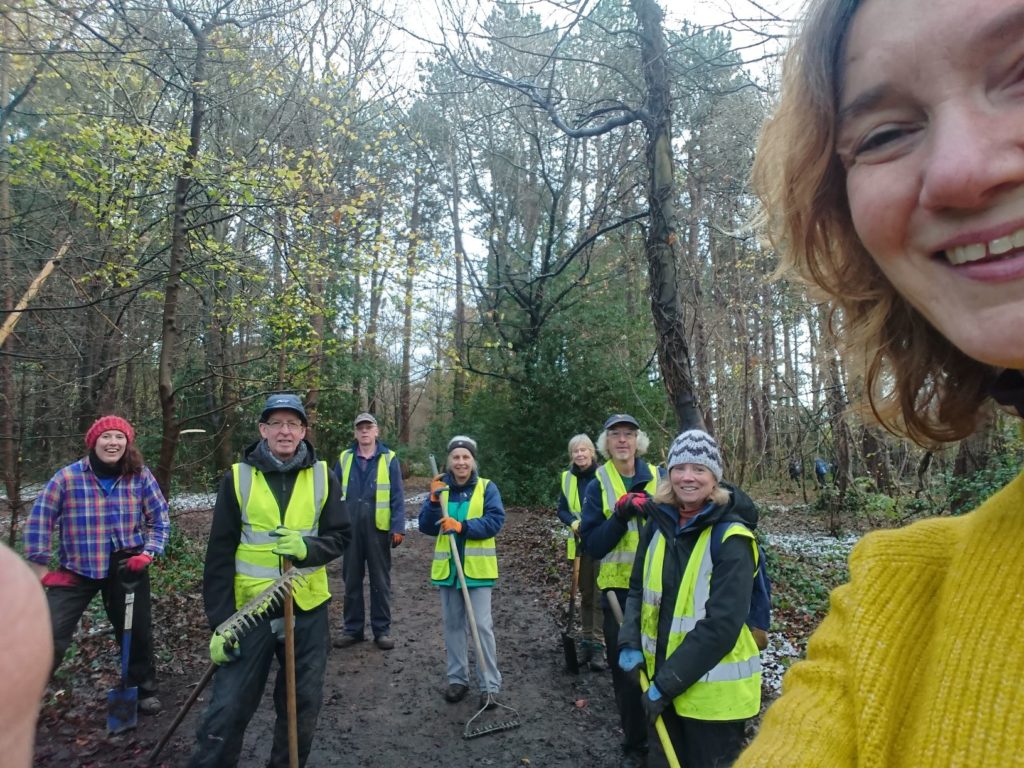It Takes a Team
Although we were unable to welcome schools to the Centre last term due to Covid-19 restrictions, I was still able to deliver outdoor learning on an embedded placement at Braidburn Special School, from October to December. I spent two days a week at the school working in a ‘bubble’ of three senior classes, delivering three sessions a day on the wildlife in the playground and the woods beyond. The pupils were a joy to work with. As keen as the staff were to get the pupils outside and into the woods, the multiple complications of running a school in a pandemic meant that the classes had not left the school grounds this academic year. Plus, the paths in the nearby woodland were puddly and covered with leaf detritus. Teachers were worried that the wheelchairs would get dirty or damaged, or that walking children would slip and injure themselves. That’s where our wonderful team of volunteers stepped in and made a difference. In a few hours they scraped the woodland paths, revealing a hard and accessible path below.

Furthermore, dedicated volunteer Andrew Dickson gave up a snowy morning to walk further afield with me, looking for accessible walking routes for the school to use when the weather improves. Oxgangs P7s then walked the routes and looked out for points of interest for the Braidburn learners, many of whom have limited sight. Now we are in lockdown proper and schools are only open to children of essential workers and vulnerable children, I have time to make these routes into a map for a school to extend their outdoor learning in the future.
Since many of the learners are in wheelchairs and/or have significantly reduced vision, my challenge has been to provide engaging environmental learning that meets the needs of all learners in each class, so we have focused on sensory learning with multiple approaches to suit the range of learning styles in each class.
Animal tracks—looking at tracks and identifying animals: making chalk tracks with wheelchair wheels, hands and feet, using sticks to mark tracks in clay
Water—looking at fish and invertebrates brought to school from the river, conducting sinking and floating experiments
Who lives in the woods—looking at pictures of animals and identifying what animals might live or travel through the playground
Animals in winter—exploring how active animals like squirrel survive by hiding nuts. Hide bean bag ‘nuts’ around the playground and then find them again.
Hide pine cones in sand and then find them again. Make bird feeders and paint bird houses.
Mapping—north and south, making a map of the playground, making a map of the woods (when we finally visit)
Conservation—playground clean up with litter pickers, and hope to repeat the activity in the woods



